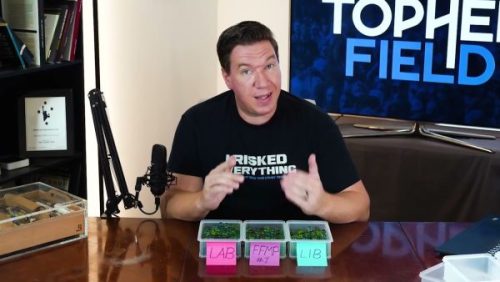
How preferential voting works with Topher Field
Make the election work for you. Put a kick in your preferential vote.
By Gary Scarrabelotti
Here is a little pre-election public service.
There’s a Federal election, as you all know, on Saturday, 21 May. Booths have been open, indeed, since Monday 9 May for pre-poll voting.
It’s a fair bet that a lot of us don’t understand well enough the preferential voting system or how to use it to our advantage, as distinct from the advantage of the major political parties.
Well, behold: political commentator, Topher Field, presents here a wonderfully clear lesson on how preferential voting works — and on what we need to do make the system bend in our favour.
Now, in this election, Topher is standing for the Liberal Democrats as a Senate candidate in Tasmania. So, let’s be clear. I’m not recommending either that you vote for the Liberal Democrats or, if you happen to be a Taswegian, that you vote for Topher. What I am keen to do, however, is to share with you Topher’s expert and lucid account of how our preferential voting system operates. More to the point, I would like us all to attend to how we can make it work for ourselves.
Takeaway
My personal takeaway from this splendid little video lesson is this: forget the major parties — the Liberals, the Nationals, Labor and the Greens; forget their how-to-vote cards; vote, instead, the way you want to vote. Put the parties and the candidates in the order that you choose to put them and number them on your ballot papers accordingly. It’s that simple.
Don’t rely on the majors and their how-to-vote dodgers. Make up your own. It’s easy. There’s even a website that helps you to do just that. It’s here, care of Reignite Democracy in Australia (RDA). It’s a great site. You can follow the RDA generated how-to-vote card (HTV) or play around within it to produce your own custom version. Having done that, you can print off the cards for both the House of Representatives and the Senate and carry them with you to the polling booth and vote therein according to your choice.
The RDA how-to-vote cards, however, have some built-in assumptions that you need to be aware of.
First. and most important, they assume that people resorting to their HTV facility will want to place the major parties last on their ballot papers while giving their leading votes to minor “freedom parties” and, thereafter, to other independents. This is not some hidden algorithm or anything like that. The RDA explicitly advocates putting the majors last.
Secondly, the HTVs generated by the RDA site for the Senate assume voting above-the-line.
Finally, although there is flexibility within the RDA’s how-to-vote generator to select your own candidate order, there is no option to place so-called “teal independents” below the majors. This design feature is obviously dictated by their first principle: “put the majors last”. RDA is quite literal about this.
Now, if all of these assumptions fit your own voting intentions, then the RDA how-to-vote generator is perfect for you.
Earthquake option
Some voters are so deeply alienated by the last two years of Covid hysteria in high places — of fear-mongering, manipulation and misgovernment — that a lot of punters are going to take drastic measures. They want to punish the majors so badly — especially Coalition MPs and Senators who supported the Morrison government’s anti-constitutional, livelihood destroying, medical malpracticing Covid measures — that they are prepared to vote crypto-Greens ahead of Liberal, National, Labor and Green candidates. This is the earthquake option: to shake the Coalition parties, in particular, to their very foundations.
I sympathise deeply and wouldn’t be shattered should it come to pass.
For my part, nevertheless, while I’ll be putting the majors last on my Reps ballot paper, for the Senate I plan to vote below-the-line, to number all the boxes and to place suspected “teals” below the Greens. For that very purpose, I’ve prepared my own Senate how-to-vote card.
What’s are “teals” — and why do they matter?
“Teals” are commonly said to be independents with an undeclared radical Green agenda, running against selected Coalition candidates and, in most cases, whose campaigns are funded, at least partly, by Climate 200, a climate action ginger group founded by Simon Holmes à Court. A recent article in The Guardian usefully helps to identify them and the seats to which they aspire. They are running in at least 20 electorates. In each case, by the way, the RDA’s model how-to-vote cards for the Reps preference these “teal” candidates above those of the Liberal and National parties. I see the ‘logic’, but I won’t be following it.
My own definition of a “teal” may be a little loose. But, on my Senate ballot paper, I’m putting those suspected of being potential Green collaborators below the Greens themselves.
My thinking?
I can’t see how one can properly respond to the worst federal government since Federation by giving a leg up (however modest) to political aspirants whose policies — or policy sympathies — are more threatening to the national interest and to personal freedom than those already being prosecuted by the present terrible incumbents of the Treasury benches.
GOOD ADVICE
Bravo! Very good piece as always. Is the Scomo government the worst in our history though? There are some close competitors, surely! I agree they deserve to be punished though. I can’t handle acronyms — what are teals please?
David Daintree
Colebrook, Tas